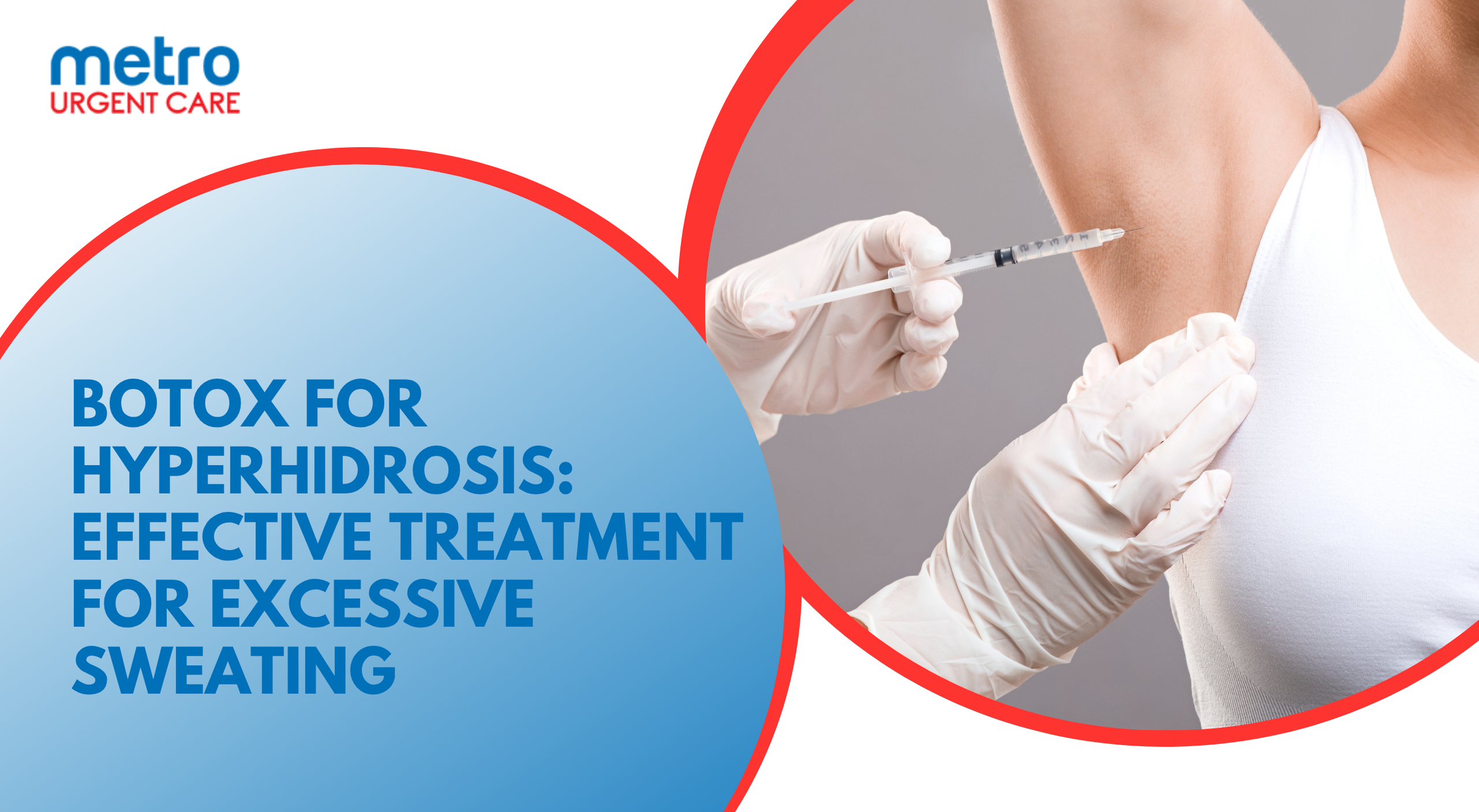


Do you constantly find yourself battling embarrassing sweat stains, even in mild temperatures? Do clammy hands make handshakes awkward, or sweaty feet lead to slippery situations? If so, you're not alone. Excessive sweating, medically known as hyperhidrosis, is a common and often debilitating condition that can significantly impact daily life, confidence, and even professional interactions.
While there are various strategies for managing sweat, from strong antiperspirants to oral medications, one highly effective and increasingly popular solution is making waves: Botox for hyperhidrosis.
Learn how Botox offers targeted relief from hyperhidrosis and improved comfort.
Hyperhidrosis is a chronic condition that causes excessive sweating beyond what's needed to regulate body temperature. It can occur even without heat or physical activity and often interferes with daily life.
There are two types:
Primary Hyperhidrosis: Not linked to any medical condition; usually affects specific areas like the underarms, hands, feet, or face.
Secondary Hyperhidrosis: Caused by an underlying condition or medication and often affects larger body areas.
Common areas affected include the underarms, palms, soles, and face. Identifying the type and location of sweating helps determine effective treatment options like Botox.
Botox (botulinum toxin) works by temporarily blocking the nerve signals that trigger the release of sweat from sweat glands. When injected into the skin, Botox targets acetylcholine, a neurotransmitter responsible for stimulating sweat production. By blocking this signal, sweat glands stay inactive, dramatically reducing perspiration.
This is especially effective for areas like:
Underarms
Palms of the hands
Soles of the feet
Forehead and scalp
The procedure involves a series of small injections directly into the affected area, targeting the sweat glands precisely for maximum effectiveness.
Opting for Botox treatment for hyperhidrosis comes with several advantages:
Non-Surgical & Minimally Invasive: No scalpels or stitches needed. Botox injections are a simple, non-surgical procedure with minimal disruption.
Quick, Effective Results: Noticeable sweat reduction often appears within days, with full effects typically seen in two weeks.
Long-Lasting Relief: Enjoy relief for 4-6 months, with the potential for longer-lasting results from repeated treatments.
Minimal Downtime: The quick procedure (under 30 minutes) lets most people return to daily activities immediately.
Targeted Treatment: Effectively treats excessive sweating in specific areas like underarms, hands, feet, and face.
Here’s what the Botox process typically involves:
Initial consultation
Your specialist will assess your medical history, identify the areas most affected by sweating, and determine if Botox is right for you.
Pain level
Most people experience minimal discomfort, often described as a quick sting or pinch. A numbing cream may be applied to sensitive areas beforehand to minimize discomfort.
Post-treatment care
Mild redness, swelling, or bruising can occur but usually subsides within a day or two. Patients are advised to avoid vigorous activity or hot showers for the first 24 hours.
On average, Botox provides noticeable relief from excessive sweating for 6 to 12 months. The duration may vary depending on:
The severity of your sweating
The area being treated (hands and feet may require higher doses)
Your body’s response to the treatment
For many, this consistent relief transforms their quality of life, allowing them to wear any clothing, shake hands confidently, and stay dry under pressure.
While Botox for hyperhidrosis is generally safe, it's good to be aware of the potential side effects.
Common, Mild Side Effects:
Mild bruising or tenderness right where the injections were given.
Temporary muscle weakness, especially if you have injections in your hands or feet. This usually resolves on its own.
Rare, More Serious Complications:
Allergic reactions.
Headaches or flu-like symptoms.
Temporary muscle weakness that extends beyond the immediate injection area.
Who Should Avoid Botox for Sweating:
Botox isn't for everyone. You should avoid this treatment if you:
Have an allergy to botulinum toxin (Botox).
Suffer from certain neuromuscular disorders.
Are pregnant or breastfeeding (always discuss this with your doctor first).
For those living with hyperhidrosis, Botox offers a powerful and non-invasive treatment that can make a real difference in everyday life. By temporarily calming overactive sweat glands in targeted areas like the underarms, hands, feet, or face, it helps reduce excessive sweating and restores your sense of comfort and control. You don’t have to let sweat dictate your day.
If excessive sweating is interfering with your quality of life, the team at Metro Urgent Care is here to help. Contact us today and take the first step toward lasting relief and renewed confidence.
1. How soon can I expect to see results from Botox for sweating?
Most people notice a reduction in sweating within 4–7 days, with full effects appearing in about two weeks.
2. Is Botox for sweat reduction permanent?
Botox forsweat reduction is not permanent. Results usually last 4 to 6 months, with follow-up treatments needed to maintain the effects.
3. How many Botox treatments do I need?
Typically, two sessions per year are sufficient, but your provider will design a plan to meet your specific needs.
4. Are there any risks involved in Botox treatment?
Side effects are usually mild, but rare complications like muscle weakness or allergic reactions can occur.
5. Can Botox be used to treat excessive sweating in all areas?
Botox is highly effective for excessive sweating in areas like the underarms, palms of the hands, soles of the feet, and even the face. Your doctor will determine if Botox is suitable for your specific areas of concern.